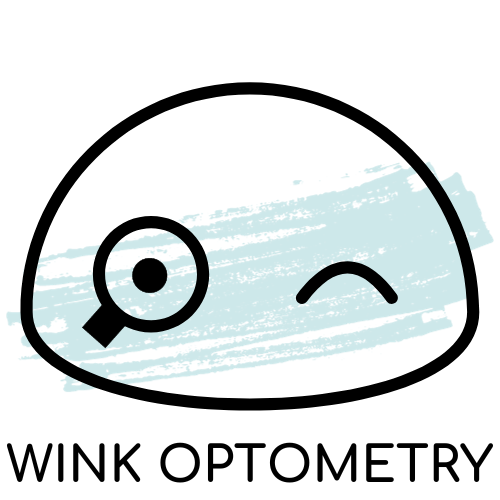With the increase in near demands on today’s society, the advent of therapeutic lenses is becoming more popular. More lens manufacturers are putting a stronger focus on developing different powers and types of therapeutic lenses to accommodate for the different types of near demands. The average amount of screen time (computers, cell phones, tv’s, laptops, iPads, etc.) for an adult is charting to be ~16 hours per day – that’s almost every waking hour. This puts a huge demand on our eye muscles that hasn’t been required before. Go back several centuries and the demands put on our eyes has changed drastically from hunting (distance) to 16″ (and closer) from our face (phones).
What are therapeutic lenses? Therapeutics are “mini-progressives” in simple terms. They provide more than one prescription for your eyes to look through. Straight ahead and majority of the top half of the lens is the regular distance prescription. Through the bottom half/lower part of the lens, the “relaxation/therapeutic” prescription kicks in and helps our eye muscles with the focusing of near objects (anything within arm’s length). By having both prescriptions available to our eyes, it makes changing focus (from near to far or far to near) easier on our visual system and reduces the near demand we put on our eyes by allowing the lenses to do part of the work. There are different designs available by different manufacturers. Each design works better for certain near tasks – ie. Essilor’s EyeZen is better for primarily phone users and Nikon’s RelaxSee and Hoya’s Sync lenses are better for computer/laptop users. It is important that you determine your primary screen usage before selecting which therapeutic works best for you. As with progressives, therapeutic lenses require some adaptation time and one design does not work for everybody.
 Computer prescriptions are also a very viable solution for certain people. I usually recommend computer prescriptions (single vision just for computer use) for people that use more than one monitor for most of the day. Therapeutics don’t work as well in this setting due to the limited field of view meant for the screen (bottom half). A computer prescription will allow you to utilize the entire lens for the screen rather than just the bottom half in a therapeutic. It is important to disclose this information to your eye care provider so they can make the best suggestions for your visual needs. The downside to this option is that your distance vision will be slightly blurry and you will have two different glasses rather than one pair that you can use for both. It is important to weigh both options when making a choice for your eye wear.
Computer prescriptions are also a very viable solution for certain people. I usually recommend computer prescriptions (single vision just for computer use) for people that use more than one monitor for most of the day. Therapeutics don’t work as well in this setting due to the limited field of view meant for the screen (bottom half). A computer prescription will allow you to utilize the entire lens for the screen rather than just the bottom half in a therapeutic. It is important to disclose this information to your eye care provider so they can make the best suggestions for your visual needs. The downside to this option is that your distance vision will be slightly blurry and you will have two different glasses rather than one pair that you can use for both. It is important to weigh both options when making a choice for your eye wear.
The demand we’re putting on our eye muscles is like holding a squat for the same amount of time – it’s a lot of unrealistic work for our muscles. The eye muscles used for focusing are not like the rest of the muscles in our body; they don’t get stronger or endure more stress the more we work them. The eye muscles actually just get weaker faster. They have a limited capacity and that capacity diminishes every year we get older until they eventually don’t work at all. Over-using them in our adult primes is causing us to need reading glasses sooner than previous generations. That’s why it’s important that our eye wear choices reflect our lifestyle. Not having the proper eye wear can cause many other side effects that might not immediately identify as eye problems. Head aches, back pain, neck pain, and a feeling of overall fatigue can indicate that our visual system is being over-worked. Side effects that are more apparent include inability to focus, trouble changing focus (from near to far and vice versa), eye strain, the need to squint, and blurry vision after focusing on near objects for a long period of time.
As someone who constantly changes their focus and uses mostly a desktop and phone during the day, I have found that the Nikon RelaxSee or Hoya Sync work best for me. Initially, it was a little odd adjusting to the lenses but within a couple of hours I was fine and I don’t even notice the difference now. Although many people may not need a therapeutic, I’m an advocate for preventative care and prefer to preserve what muscle capability is left – rather than wait until a near prescription is really needed to prescribe computer/therapeutic lenses. Ultimately, it’s about making an informed choice and I like to make sure all the patients that come through Wink know their options before making a decision.

